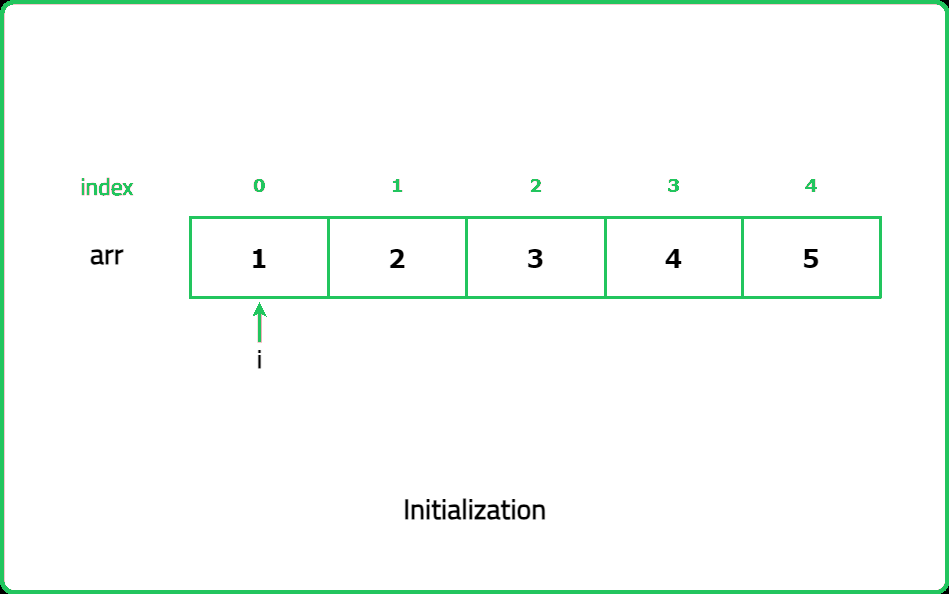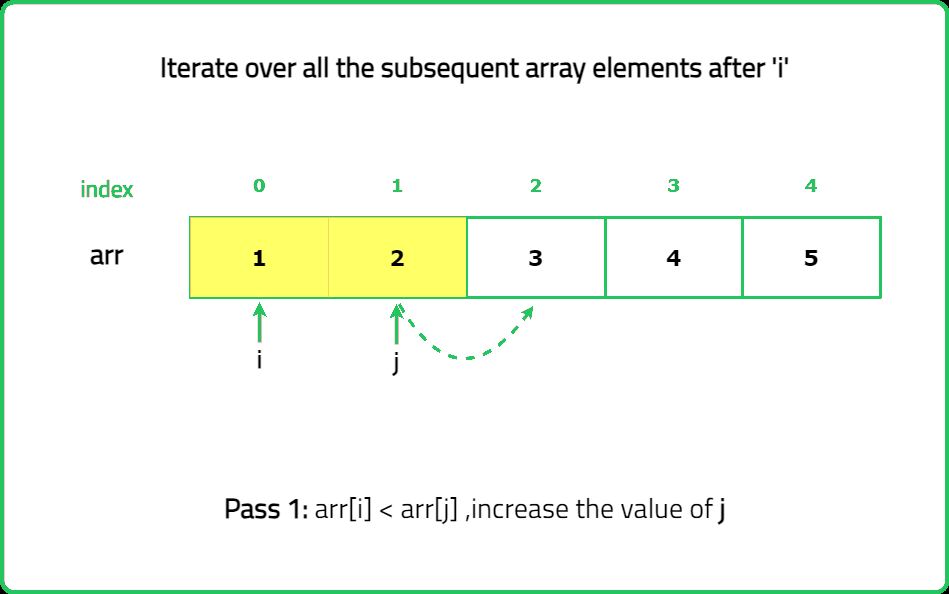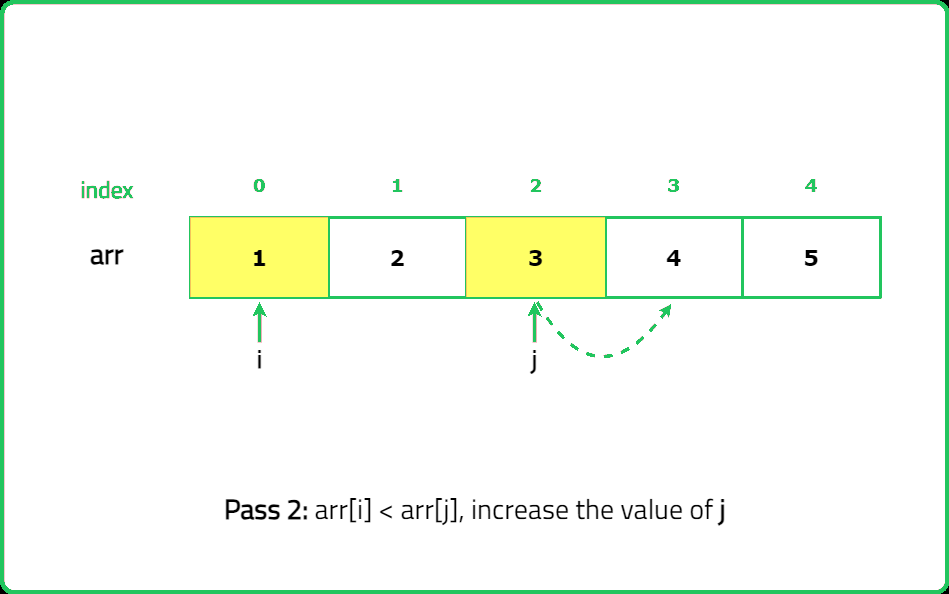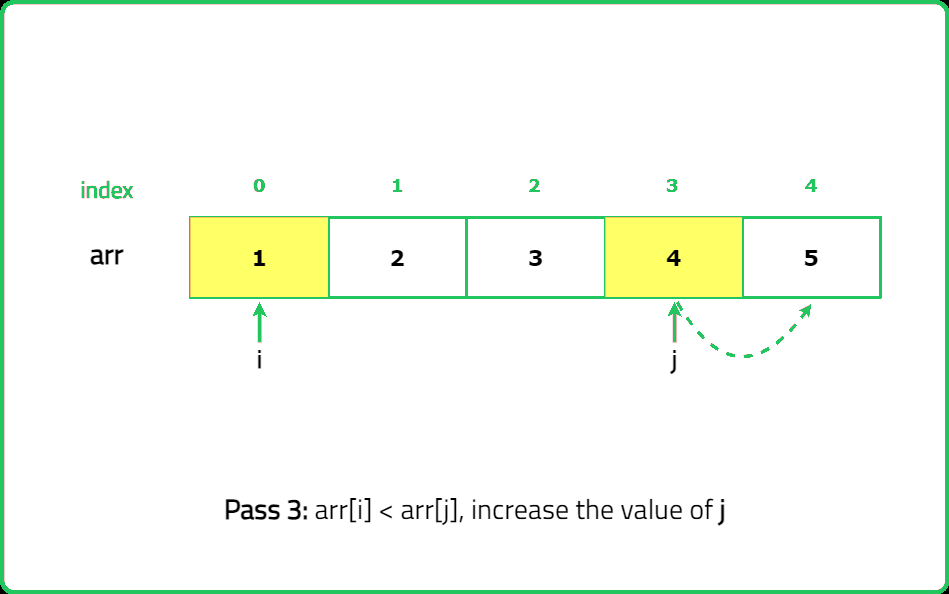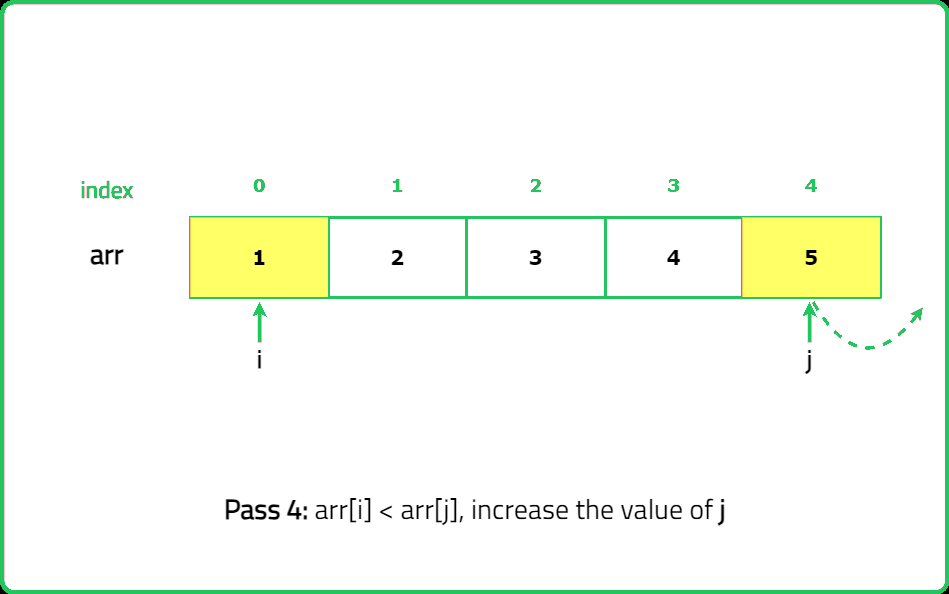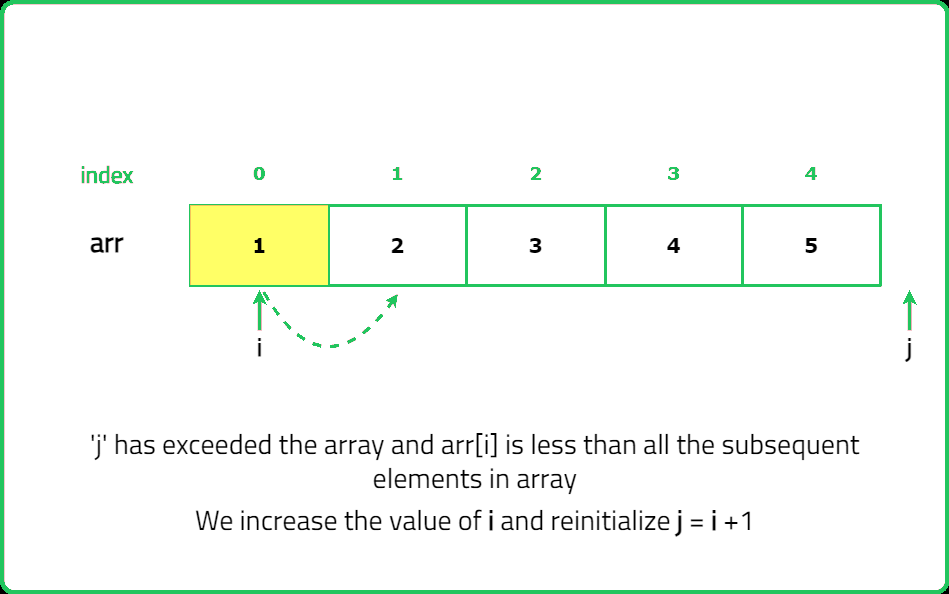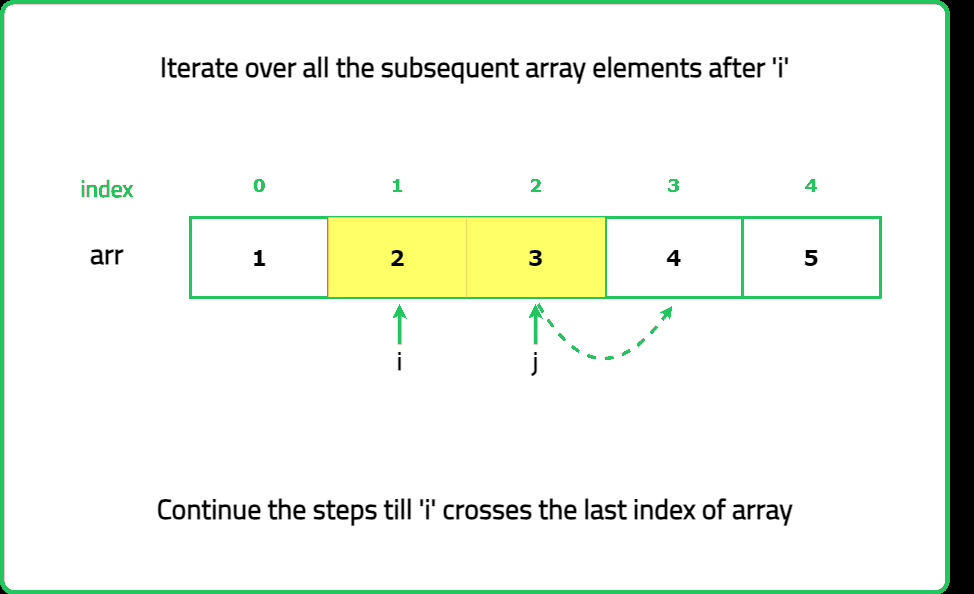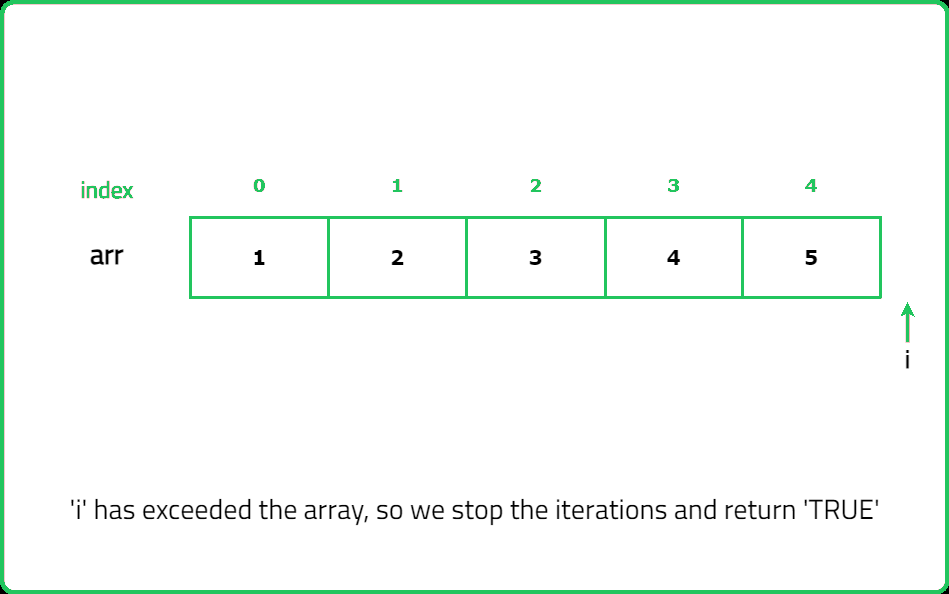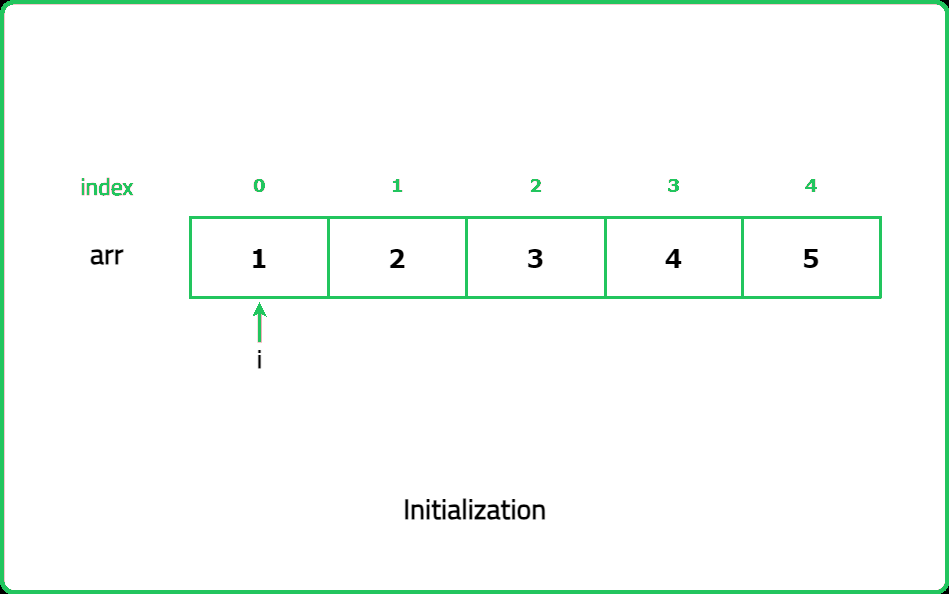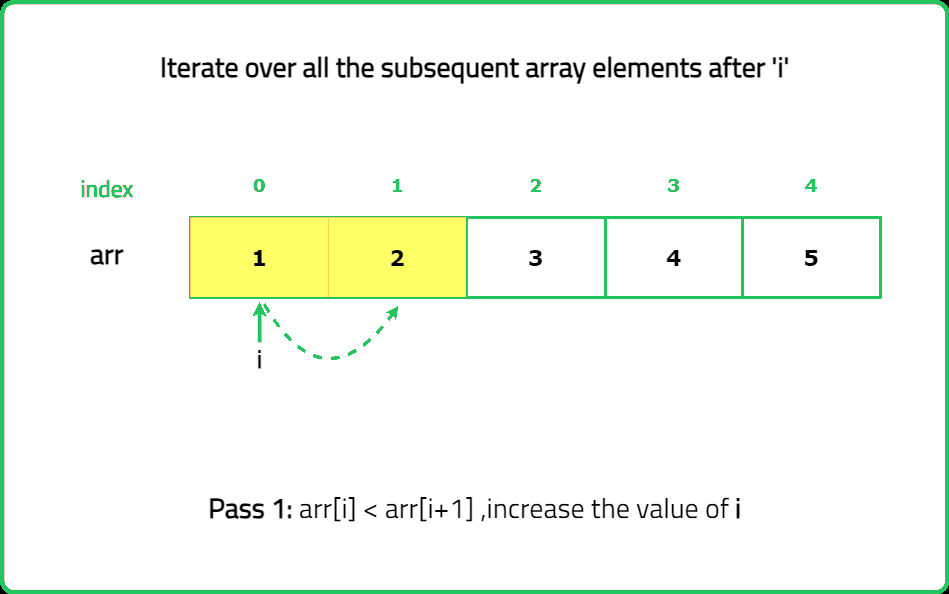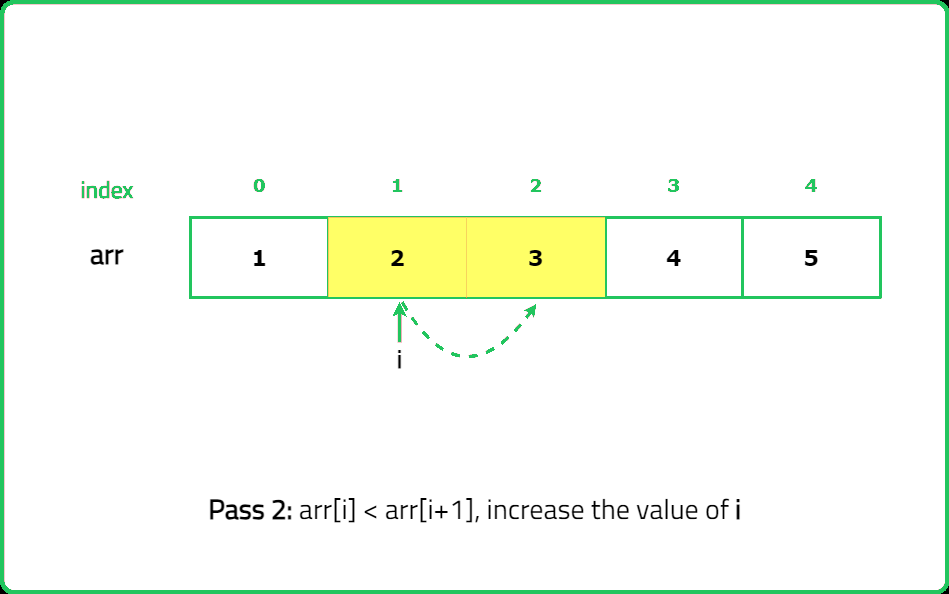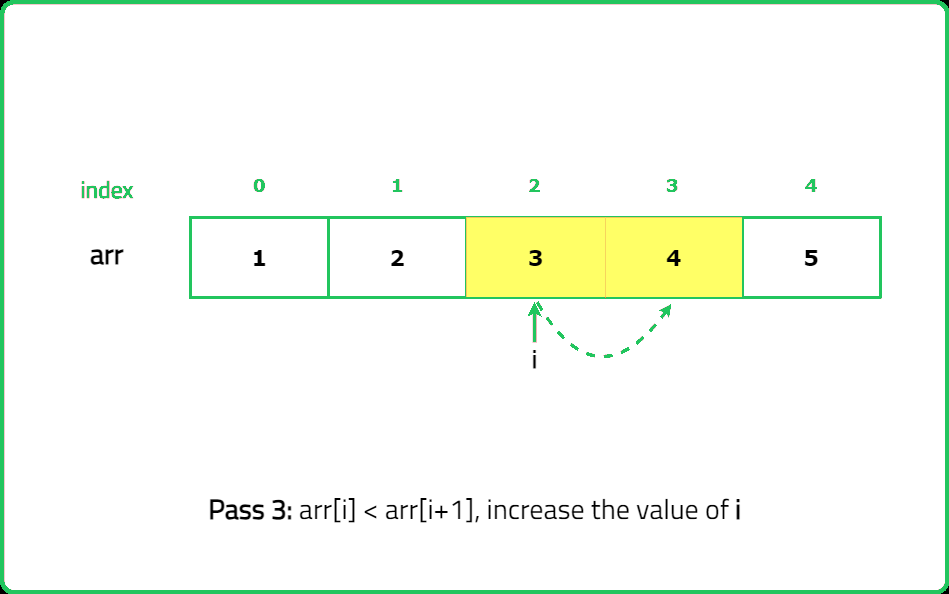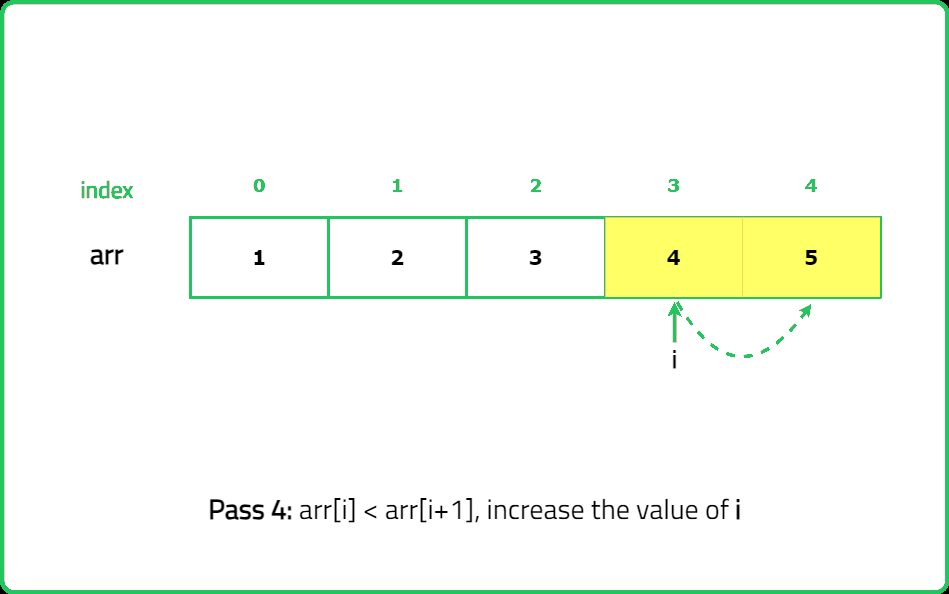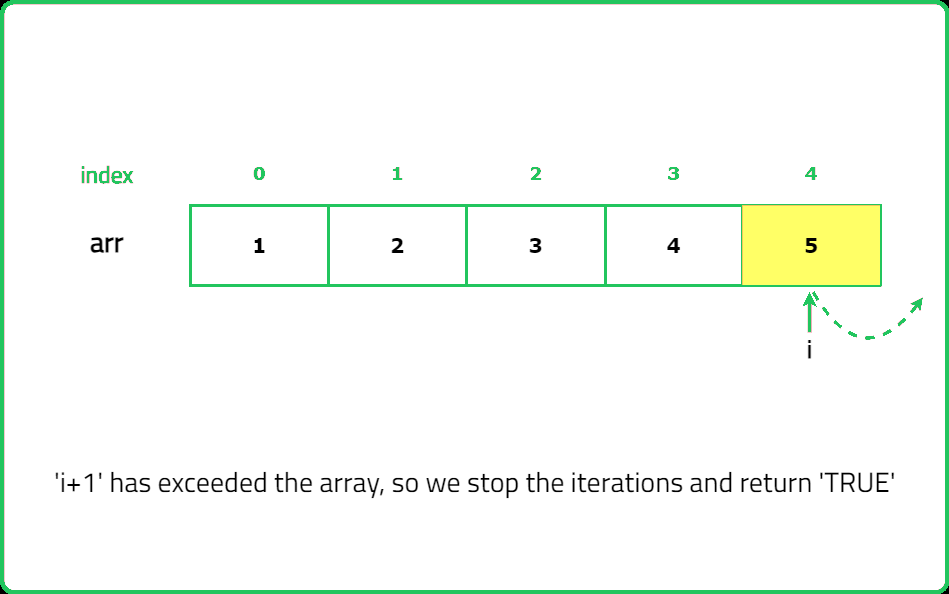Check if the array is sorted
Beginner Problems
Basic Arrays
Easy
Given an array arr of size n, the task is to check if the given array is sorted in (ascending / Increasing / Non-decreasing) order. If the array is sorted then return True, else return False.
Examples:
Input: n = 5, arr = [1,2,3,4,5]
Output: True
Explanation: The given array is sorted i.e Every element in the array is smaller than or equals to its next values, So the answer is True.
Input: n = 5, arr = [5,4,6,7,8]
Output: False
Explanation: The given array is Not sorted i.e Every element in the array is not smaller than or equal to its next values, So the answer is False. Here element 5 is not smaller than or equal to its future elements.
Input: n = 5, arr = [5,4,3,2,1]
Constraints
- 1 ≤ n ≤ 106
- - 109 ≤ arr[i] ≤ 109
Company Tags
TCS
Cognizant
Accenture
Infosys
Capgemini
Wipro
IBM
HCL
Tech Mahindra
MindTree
